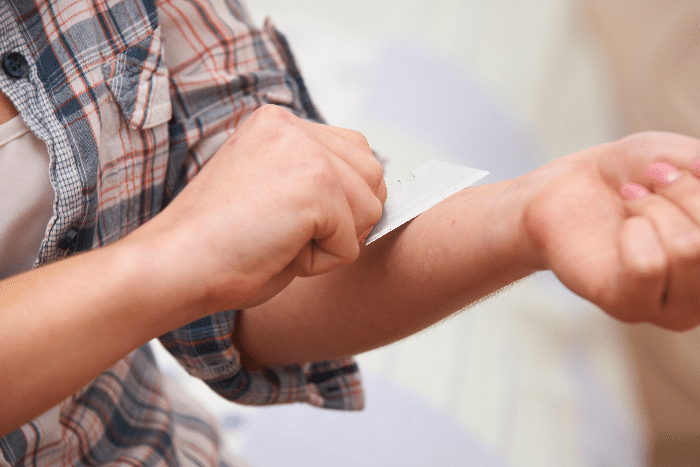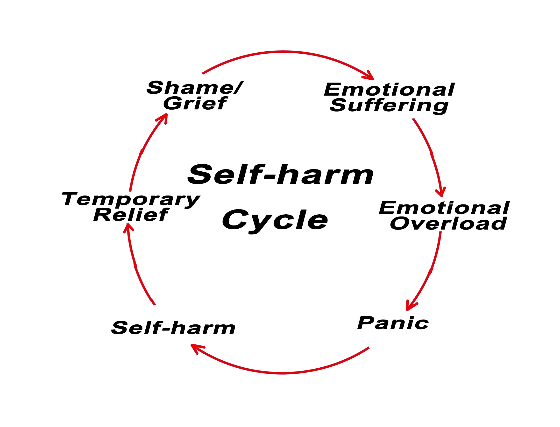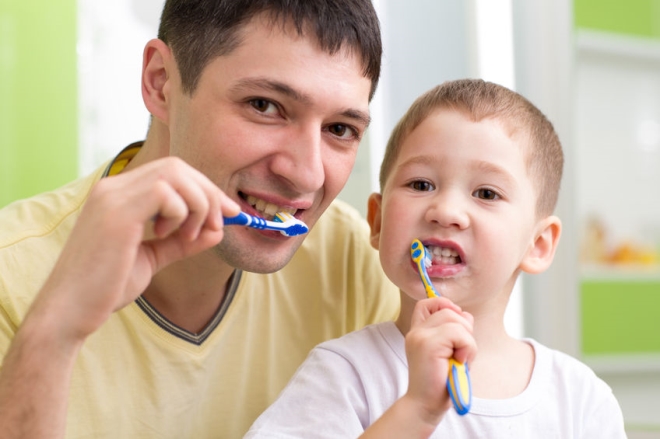How To Support A Teenager Who Self-Harm
Practical Steps For Parents To Understand And Help Teens Struggling With Self-Harm

Before you get started with today’s article, please note that we’re going to be talking about self-harm. This is a serious topic, and as parents, we are often left reeling when we see signs of it in our beloved children.
You can reach out, too. There is hope, and your teen can recover.
Discovering your teenager is self-harming is overwhelming and heartbreaking. As a stepparent, you might feel a mix of confusion, guilt, and uncertainty about how to help. It’s important to remember that you’re not alone, and there are steps you can take to help your teenager through this challenging time. What’s important is that you love and want to support them.
A lot of parents have a knee-jerk reaction to self-harm. This reaction makes sense – it’s not something you were expecting, and you’re reacting out of fear for your child. But these reactions aren’t always helpful.
If you want to help your teen who self-harms, you need to understand how and why this starts happening. That starts with education and asking what self-harm is.
What Is Self-Harm?
Self-harm, also known as non-suicidal self-injury (NSSI), refers to the intentional act of causing physical harm to oneself without the intent to end one’s life. Teenagers who self-harm may also experience suicidal ideation, but self-harm is not a suicide attempt. It is a coping mechanism some teenagers use to manage overwhelming emotions, stress, or trauma.
While self-harm is a serious concern, it’s crucial to distinguish it from suicidal behavior. Self-harm is often a way to express deep emotional pain rather than a desire to die. Understanding this distinction can help you approach the situation with empathy and provide the appropriate support your teenager needs.
Why Is Understanding Self-harm Important?
Self-harm is more common among teenagers than many realize, affecting between 8% and 19% of teenagers. Adolescence is filled with emotional turbulence, identity exploration, and social pressures.
For some teens, self-harm becomes a way to cope with these intense feelings. Recognizing and addressing self-harm early can prevent further physical and emotional damage and promote healthier coping strategies.
Understanding Teenage Self-Harm
Self-harm can manifest in various forms, and being aware of these can help you identify if your teenager is struggling. Common types include:
- Cutting: Using sharp objects to make cuts on the skin.
- Burning: Using heat or chemicals to inflict burns.
- Scratching: Intentionally scratching oneself to the point of bleeding or scarring.
- Hitting or Bruising: Punching oneself or banging body parts against hard surfaces.
- Other Forms: This can include hair pulling, interfering with wound healing, or ingesting harmful substances.
Each of these behaviors serves as a physical expression of internal pain.
Understanding why teenagers engage in self-harm can guide you in offering the proper support. Teens may use self-harm as a means of emotional regulation, helping them manage intense emotions they feel unable to control or express. It can be a response to distress or trauma, serving as a temporary relief from overwhelming feelings.
For some, self-harm is an expression of emotional pain when words fail to convey their turmoil. Others may seek control or punishment, harming themselves to exert control over their bodies or as a form of self-punishment due to feelings of guilt or worthlessness.
Signs and Symptoms of Self-Harm
Recognizing the signs of self-harm is the first step toward helping your teenager. Physical indicators might include unexplained cuts, burns, bruises, or scars. You may notice your teenager wearing long sleeves or pants even in warm weather to conceal injuries. Frequent injuries with vague or inconsistent explanations can also be a red flag.
https://www.pexels.com/photo/person-in-black-jacket-and-blue-denim-jeans-sitting-on-black-couch-4100655/
Behavioral changes are another essential aspect to monitor. Your teenager might withdraw from friends and family, preferring isolation over social interactions. Noticeable changes in mood or behavior, such as increased irritability or sadness, can signal underlying issues. A loss of interest in activities they once enjoyed is also significant.
Emotional and psychological signs include low self-esteem or expressions of self-hatred. Your teenager may have difficulty articulating feelings or show reluctance to discuss emotions. Signs of depression, anxiety, or other mental health concerns are crucial to recognize, as they often accompany self-harming behaviors.
Courses of Treatment for Teenage Self-Harm
Addressing self-harm often requires professional intervention. Various treatment options are available to support your teenager’s recovery, and this is not something you should try to do alone. Professional therapy is a cornerstone of treatment, and several modalities work well for self-harm.
Two that work well together are Cognitive Behavioral Therapy (CBT) and Dialectical Behavior Therapy (DBT). CBT helps your teenager identify and change negative thought patterns and behaviors, while DBT focuses on teaching coping skills to manage emotions and reduce harmful behaviors. These are commonly available, so you will likely be able to find a practitioner in your area.
Medication may also play a role in treatment. In some cases, a psychiatrist may prescribe antidepressants or other drugs to address underlying mental health conditions contributing to self-harm. It’s essential to consult with a healthcare professional to determine the best course of action.
Your Role In Recovery
Support systems are vital for recovery. Once your teen is stabilized through individual therapy, family therapy can help. It shows your teenager that you’re invested in them and their recovery. But it can be overwhelming for your teen to start with family therapy; individual therapy can give them the words they need to express how they’re feeling.
When immediate danger is present, dial 911 in the US and 999 in the United Kingdom. Familiarize yourself with local hotlines and mental health services specializing in crises to ensure you have readily available resources.
Preventive Measures and Support Strategies
Taking proactive steps can help your teenager develop healthier coping mechanisms and reduce the likelihood of self-harm. Promoting open communication is essential. Encourage open and honest dialogue about feelings without judgment. Let your teenager know you’re there to listen whenever they’re ready to talk and validate their feelings to show you take their emotions seriously.
Building coping skills is another crucial aspect. Remember, self-harm comes from a place of deep emotional pain that your teen doesn’t feel like they have an outlet for. Teach and model healthy ways to manage stress, such as deep breathing exercises, mindfulness, journaling, or physical activity. Encourage participation in hobbies and interests that bring joy and a sense of accomplishment. Helping them establish a routine with adequate sleep, nutrition, and relaxation time can also make a significant difference.
Moving Forward: Supporting Your Teenager’s Path to Healing
Discovering that your teenager is self-harming is undoubtedly distressing, but your support can make a significant difference in their recovery journey. By understanding what self-harm is and recognizing the signs, you’re better equipped to provide the compassionate help your teenager needs.
You play a vital role in your teenager’s well-being. Your willingness to support and understand them can foster resilience and positive outcomes. Don’t hesitate to seek help and utilize available resources to navigate this challenging time together.
If you have experience with a child self-harming, please don’t hesitate to share in the comments. It’s a nightmare for any parent, and your experiences can help guide people like you who are experiencing this situation. For more stepparenting advice, check out the Support for Stepdads blog. We’re here to support you!







